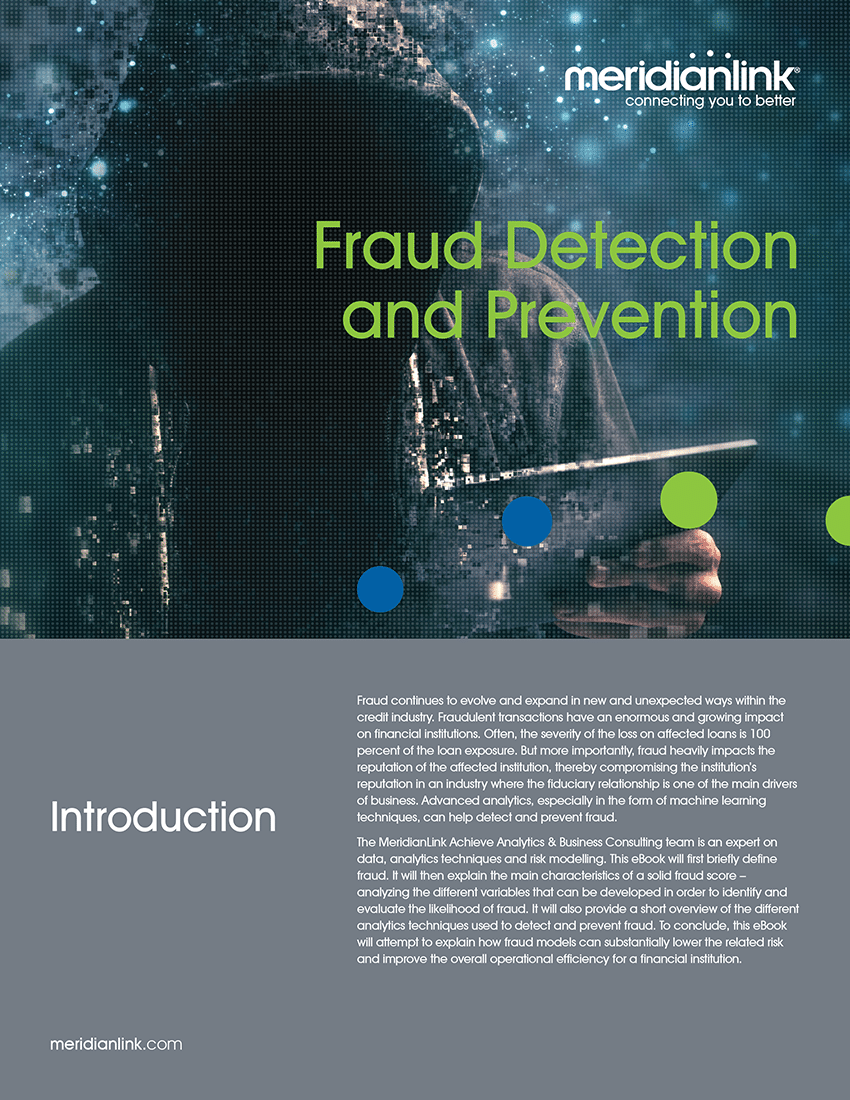Security remains one of the most important topics for consumers as businesses continue to evolve in the digital age. As data breaches appear to become more commonplace, financial institutions everywhere are ratcheting up their security efforts to identify, assess and prevent fraud.
As someone who’s had his identity stolen a few years ago, I experienced the feeling of pure panic that crashes over you when realizing credit was fraudulently established in your name and you’re left to pick up the pieces. Despite the fact that most sophisticated thieves seem to always be one step ahead, it’s a battle that needs to be fought by every financial institution to maintain a level of trust with its customers or members.
There are a number of different types of credit fraud. With a focus on origination of a loan, this blog post will describe the two most prevalent versions with regards to credit decisioning.
First-Party Fraud
This type of fraud is committed by an individual or group of individuals who open a contract with no intention of repayment. It is often confused with credit risk. The main difference is that, while credit risk is associated with an individual’s inability to pay the debt during the life of the loan, credit fraud is present when the individual has no intention of repaying the loan from the beginning.
The following are some of the characteristics of first-party fraud:
- It uses legitimate information when a credit account is opened with false or inaccurate information in the application (such as financial documents, ID, addresses, phone numbers, income, etc.)
- Very few, if any, payments are made at the beginning of the life of the loan
An example of this type of fraud is an individual who applies for a credit card and subsequently runs up the balance with no intention of repaying.
Third-Party Fraud
This type of fraud is committed without the knowledge of a person whose identity is misused. Here are some of the characteristics:
- It is analyzed, detected and investigated based on identity of the fraud victim (the individual whose identity is stolen)
- The financial institution and the individual whose identity was stolen are the victims
- The fraud is easily traced by the financial institution because the applicant information can be verified through checks with the credit bureau and other sources to determine the identity of the applicant
- No payments or very few payments are made at the beginning of the life of the loan
An example of this type of fraud would be identity theft, in which someone’s personally identifiable information (SSN, DOB, etc.) has been stolen and is subsequently used in an online credit card application.
There can be a combination of both first-party fraud and third-party fraud. An example of mixed-party fraud is the use of a synthetic identity. Synthetic identity fraud is similar to identity theft, but the information used is fictitious. The perpetrator may take pieces of information from a variety of parties to create a new identity and then use the synthetic identity to apply for credit.
Want to learn more?
Defining and identifying fraud is just the tip of the iceberg. We recently finalized an eBook that not only goes more in depth defining fraud, but also details various approached for assessing fraud as well as fraud scores and common techniques used in development.
To download a copy of our complimentary eBook, please click the button below.







